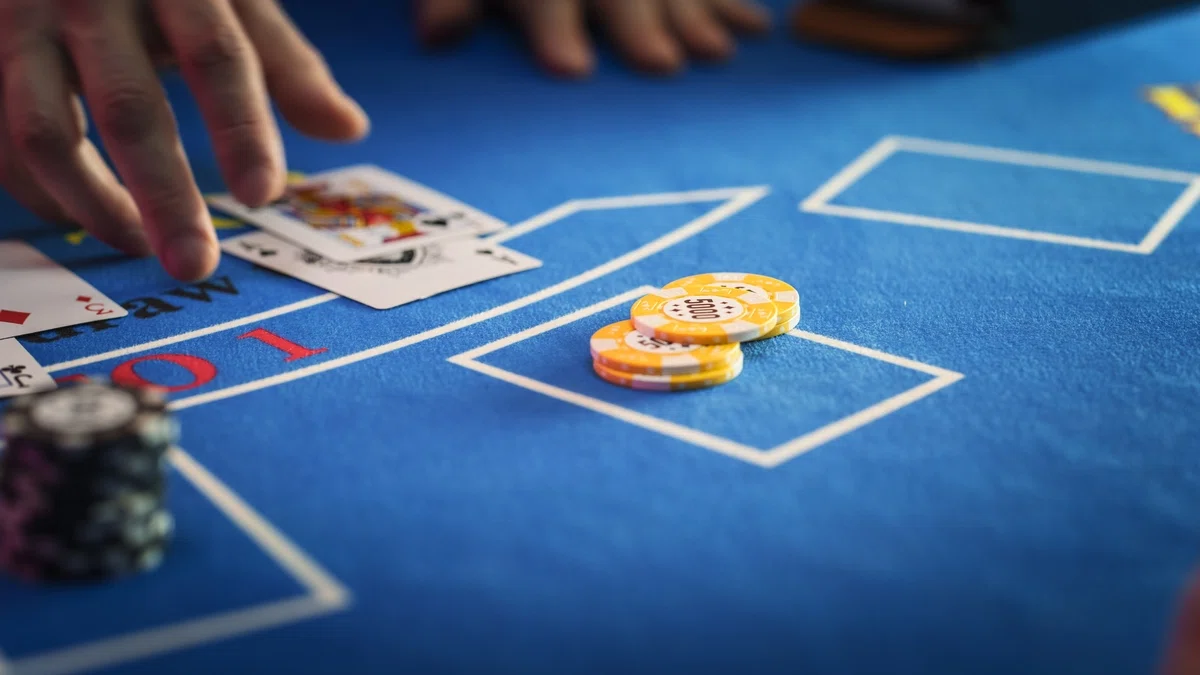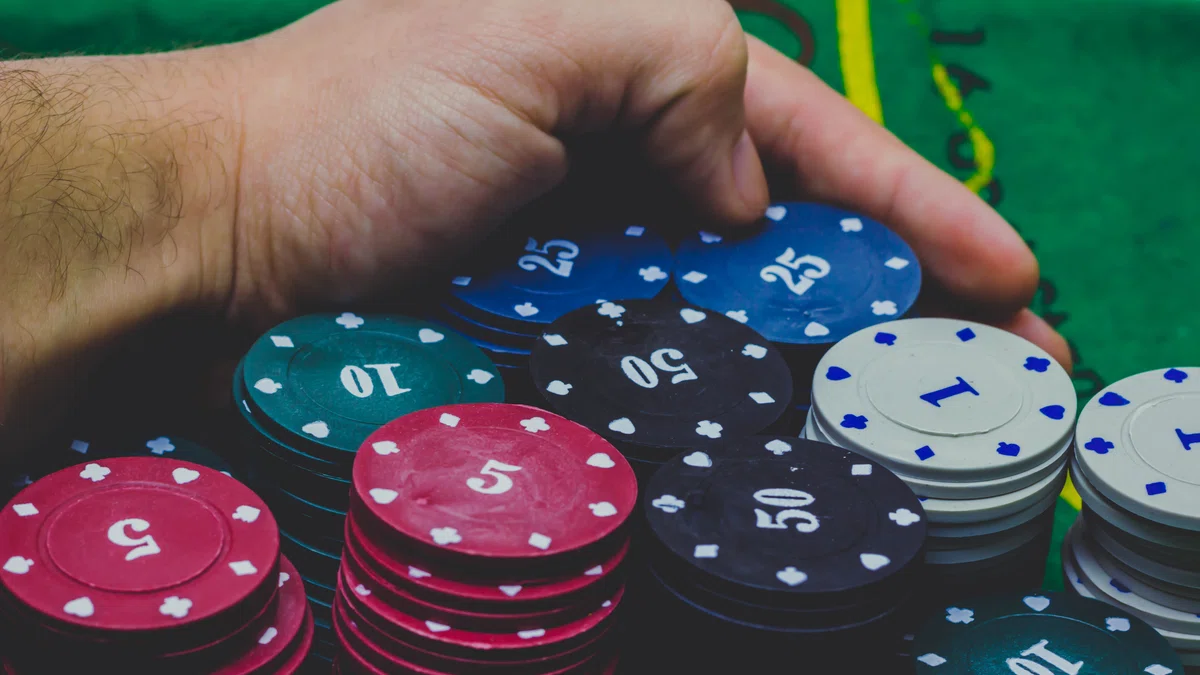The Martingale system is a unique strategy based on doubling your play amount after each loss.
It is a popular strategy for other casino games such as roulette, but how well does it fit baccarat?
In this guide, you’ll get to know what the Martingale approach is about, how to use it in baccarat and what alternatives are out there.
What Is The Martingale System?
The basic idea of Martingale is to double down after a losing spin. The idea is that when you hit a win in online baccarat, you recover the losses and then return to your basic playing.
This baccarat bankroll management system is mostly used for even plays, for instance, choosing the Player versus the Banker. The 45% win probability (approximately) offers a low house edge, which suits the Martingale strategy.
Practical Example of Martingale in Action in Baccarat
Assuming a 10 coins starting play on either the Player or the Banker:
- Game 1: 10 coins = loss
- Game 2: 20 coins = loss
- Game 3: 40 coins = win
After this sequence, your losses would be 30 coins. But the 40 coins win would cancel out your consecutive losses for 10 coins of profit. From there, you’d revert back to playing 10 coins.
This system assumes you’ll eventually hit a win.
What Do You Need to Know Before Using Baccarat Martingale?
But does the Martingale approach work for baccarat?
In theory, it can work as a short-term strategy given the near even playing described above.
Of course, in the long run the house advantage always wins, so it’s not a sure-fire way to win every baccarat game. As you know by know, there isn’t such a thing.
Then, there’s the issue of bankroll and how big it needs to be to sustain a dry period. Consider that after a 6-play losing run, you would need to play 64x your basic play just to recover from that loss.
Baccarat table limits also make the doubling strategy very tricky. Most social casinos won’t let you continue to increase your play size.
And remember that each play is separate from the last one. The previous outcome doesn’t affect the next, and the basic chance of winning a hand stays constant.

Are There Variations of The Martingale System?
Besides the main Martingale strategy, other variants of Martingale aim to lower your risk.
- Grand Martingale: Involves doubling your play after a loss, plus an extra unit. Let’s say if you lose 10 coins, your next play would be 30 coins rather than 20 coins. If you win, this approach can increase your profit. However, it increases risk and play size.
- Mini Martingale (or Limited Martingale): You only double up for a set number of plays such as three or four. If you do lose all those rounds, then stop playing immediately instead of chasing losses. This lowers the risk, but also limits your potential wins.
- Anti Martingale (Reverse Martingale) system: Flips Martingale around. Rather than doubling your play after losses, you would double down after wins. It’s considered less risky than basic Martingale because you only increase play size after wins, not losses.
Alternatives To Martingale For Baccarat
Does the Martingale system sound too risky for you? Or perhaps you don’t have a large bankroll? Let’s consider a selection of 4 alternative baccarat strategies.
- The Paroli baccarat system is lower risk compared to Martingale. With Paroli, you only place more coins after a winning hand. Plus, you’d limit your coin size after three consecutive wins. This system can work for small winning streaks. And there’s less chance of busting your total bankroll compared to traditional Martingale.
- The 1-3-2-6 System seeks to limit the Baccarat game’s volatility. It’s a unique system where after each win, you up your play by the next number (1, 3, 2, or 6). Consider this system if you’re a conservative player.
- Flat baccarat playing means you always place the same number of coins. The downside is you won’t recover losses in a quick fashion. But it’s a low volatility playing system.
- The Fibonacci system involves playing units in a numbering sequence (1, 1, 2, 3, 5, 8, 13 and so on). A lower risk strategy that aims to recover losses, as you avoid the doubling down of Martingale.
Those above four alternatives may be more appropriate for managing your bankroll, even if they take some risk off the table. On the other hand, if you want to play aggressively and make up for your losses quickly, Martingale may suit you.
It’s a risk versus reward decision. Martingale is high risk with more downside potential. The alternative systems forgo quick gains for safer play.
Bankroll Management in Martingale Baccarat
It’s vital to use sensible bankroll management when trying the Martingale strategy. Here’s how to make the most of your bankroll:
- Determine your upper loss limit when you will stop playing. If you hit this limit, take time out and stick to your strategy.
- Likewise, you may consider a break from play if you hit a winning figure target. This discipline means you can play mindfully.
- Monitor and reconsider your Martingale Baccarat strategy. Track each play and look at your win/loss outcomes. And try different systems to find one that fits your approach.
Related Posts:
Conclusion
The Martingale strategy in baccarat is an attractive system with a simple way to play. But please note that doubling spins after every loss could result in large losses, especially if the table has limits or you lose all your bankroll.
While Martingale can be a short-term boon, it rarely works across a long-term series of hands. Losing runs are likely to happen and the massive plays needed to recover losses can quickly spiral. So, when using the Martingale strategy in Baccarat, weigh up the advantages and risks, while playing with sensible bankroll management.
Lower-risk Baccarat systems include Paroli, Fibonacci, or flat playing. Each of these may match your preferred volatility and playing style.
Make the most of our social casino guides by trying these games at McLuck!

